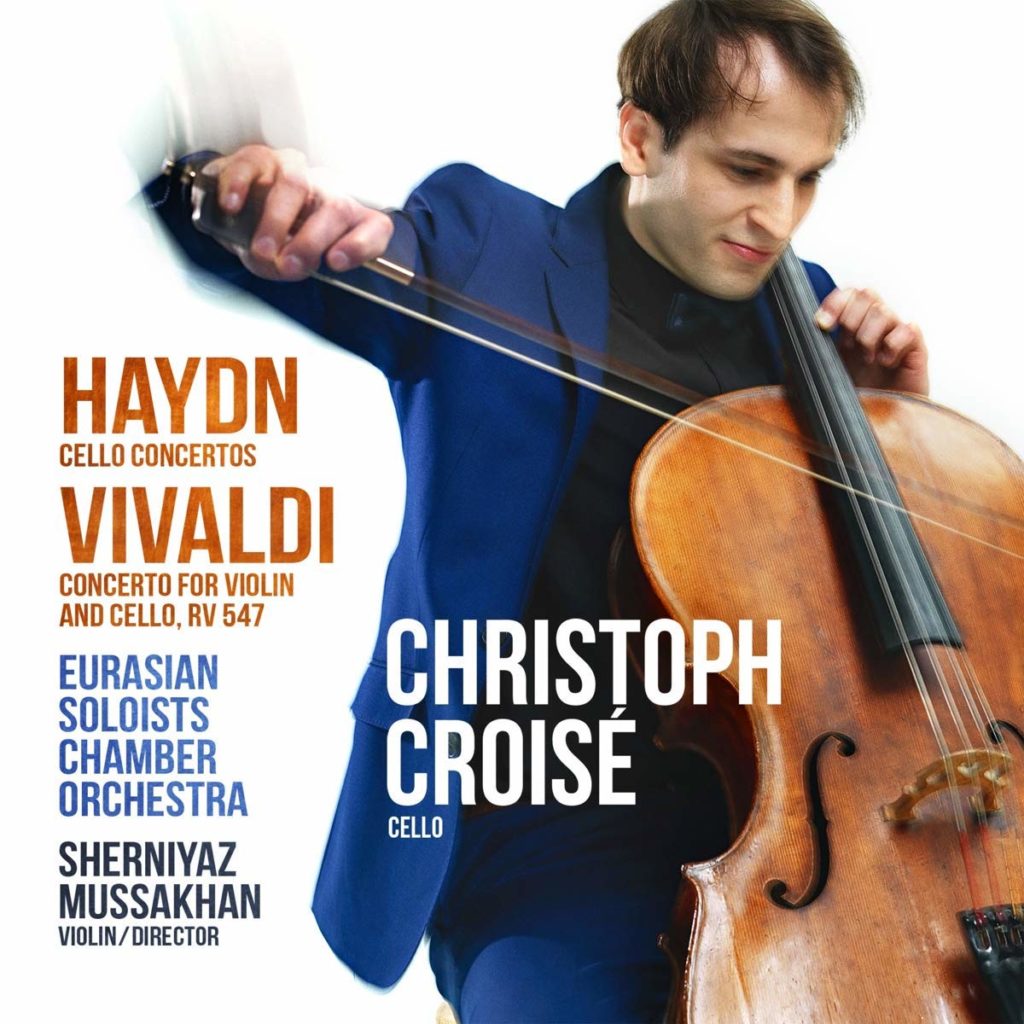 Релизы
Релизы
25-year-old Swiss cellist Christoph Croisé, who has won many awards at international competitions, is also connected with Russia. His first teacher, Alexander Neustroev was a graduate of the Moscow Central Music School. Croisé himself has repeatedly performed in St. Petersburg and even participated in the XVI Tchaikovsky competition (though he was eliminated in the first round). His technical prowess is punctuated by the signature soft, thick timbre of his cello (made by Goffriller in 1712, Venice).
At such a young age, performers often experiment with repertoire and find their niche. Croisé released his first CD in 2015 with Kazakh pianist Oksana Shevchenko. It clearly demonstrates Croisé’s interest in different styles of music, from Romantic to Modern. Therefore, it is not surprising that his search led to cooperation with the head of the newly created chamber orchestra “Eurasian Soloists” Sherniyaz Mussakhan.
Shortly after the February concert in Baden, they released a CD by Avie Records with cello concerts No. 1 and No. 2 by Haydn as well as a double Vivaldi Concerto for violin and cello. The renowned composers are connected not only with their fertility and continuity (Vivaldi pretty much laid the foundation for Haydn’s subsequent experiments), but also with endless creativity with which they explored the capabilities of instruments, especially strings.
At first glance, the uniqueness of this record is already undeniable. In a brief summary of the disc the musicians promise “a stirring programme of the 18th-century concertos by Papa Haydn and the Red Priest.” Indeed, we are so used to ceremonial, glorified portraits of Haydn and Vivaldi that it is difficult to imagine them as living people who just want to enjoy creativity and have fun with the performance. Therefore, the main thing that Croisé and Mussakhan have managed to do is tearing those wigs off. If one may consider the XVIII century music boring, it surely will not be in this recording. To go in line with this concept, “Eurasian Soloists” do not play in authentic manner and their instruments are not configured in a lower pitch.
Haydn gives Croisé plenty of opportunities to climb into the upper register of the cello — the first and second octaves, where he maneuvers between a soft quasi-mute and a clear melody that could very well belong to the violin. During the speedy parts, the musicians professionally deal with the technical complexities of the texture, without cranking the pace to 11, as some interpretations do.
The Vivaldi Concerto concludes the disk with a pleasant surprise where Mussakhan joins Croisé with the solo violin part. Since Baroque music allows a wide variety of interpretations, both soloists have added a lot of embellishments that cover the somewhat shallow texture with ornaments and arabesques. Mussakhan perhaps doesn’t show the listeners a rare, original timbre such as Croisé’s, and his strong suit in general seems to be the speed and ease with which he draws passages in the upper register.
Unfortunately, while Haydn’s concertos are undoubtedly a staple of the cello repertoire, the Vivaldi RV 547 Concerto seems to be just a filler of time. It lasts merely 8 minutes and does not stand up to the more famous works of Vivaldi. Also the listener can clearly hear the breathing, snuffling and squeaking of Croisé, as the sound engineer appeared to deliberately place the microphone too close to him. In some parts string instruments are overlapped by wind instruments, which again is probably a sound engineering issue.
These technical shortcomings should not distract us from the remarkable performance of the musicians and their fresh look at the evergreen topic of different time frame correlations. This Avie Records CD is not only a good introduction to Baroque and Viennese classical music, but also a reminder that composers are regular people just like we are.